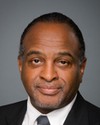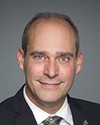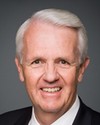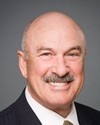Mr. Speaker, it is a pleasure to rise in the House and speak on this subject, although the trajectory of some of the changes that are being considered in the bill saddens me to a certain extent.
The government announcement was that the new Canadian museum of history's emphasis will be on dates, events, heroes and narrative timelines: basically, in 1492 Columbus sailed the ocean blue. That is how many of us learned history back in the day, and it is one of the reasons I hated history.
I have since learned to love history for the simple reason that there have been teaching methodologies, teachers in particular, who have created a link between history and what it means to young Canadians today. They have brought out the relevance of that history.
My concern with this redirection of history into more of a “great man” approach—this person did this on this date, that person did that on that date—is that we lose the context of how certain things came to be. We lose the context of the contribution of so many different groups of people, so many different individuals who have done heroic things but may not be considered heroes in the context of great events.
We all know the adage that history is written by the victors. As the government likes to remind us far too often, Conservatives won a majority back in 2011. They have used that majority as a battering ram, as opposed to taking a responsibility to make sure that not only the majority are taken care of, but the minority as well. What we do not want to see in this situation is a majority museum, where the exhibitions, the explanations and the narrative speak to a selective memory of history, to selected events. It is an environment that is troubling to the work being done right now in the Museum of Civilization. It is something that is troubling even to teachers of history.
According to the Canadian Association of University Teachers, this initiative:
...fits into a pattern of politically motivated heritage policy that has been emerging over the past few years. Alongside the great quantities of public funds that were directed into the celebration of the bicentennial of the War of 1812, this initiative reflects a new use of history to support the government's political agenda—that is, the evocation of particular features of our past as worthy of official endorsement and promotion.
This is even concerning teachers. They fear that instead of the Canadian history museum creating something that is inclusive of the contribution of people and telling some of the hard truths in the building of this nation, this adage of history being written by the victors is going to take place.
This is a great nation. I have worked very hard over the years to tell its story in our fight to make sure that we have Canadian content on our television stations, that our broadcasters are obligated to tell Canadian stories with Canadians, by Canadians, for Canadians.
That leads me to my second point. The idea of this museum being created to conserve Canadian history is rather ironic when we look at the Conservative cuts to the agencies that are tasked with preserving Canadian history. The budget of 2012 cut $29 million from Parks Canada, which is responsible for over 167 national historic sites across Canada. More than 80% of Parks Canada archeologists and curators lost their jobs.
Following the 2012 budget, the number of conservation professionals in the service of Parks Canada fell from 33 to 8. That means 8 employees along with 12 archeologists who are still employed by Parks Canada around the country have the daunting task of taking care of 30 million archeological objects under the jurisdiction of Parks Canada. It means that basically 20 people are taking care of 30 million pieces of our history.
It does not take a rocket scientist to see that is a rather daunting task. If we are talking about preserving Canadian history, cutting the number of people who are responsible for the preservation, discovery and care of those pieces of Canadian history does not seem to be a very supportive move.
Parks Canada also had to eliminate three research positions at national historical sites associated with the first nations people, and the Conservatives fired 50% of the Library and Archives Canada's digitization staff. There is a big push to digitize Canadian history and the work that Library and Archives Canada does, but now it is to do that with 50% fewer individuals.
The situation is also exacerbated by the consultation process, or the lack thereof, in the development of this idea of the Canadian history museum.
It was the Minister of Canadian Heritage and Official Languages himself who came up with the idea and then launched the consultation process. It seems to me that the naming of a museum should be left to museum professionals, historians, anthropologists, archivists, librarians and such, as well as individual groups who have a vested interest in how their stories are told and in ensuring that their stories are told. Examples are our first nations brothers and sisters, the Inuit and Metis. The contribution by women to Canadian history always tends to be marginalized in the history books in the context of mentioning that a certain person did something. As well, there is the inclusion and consultation of members of the cultural community, in particular the African-Canadian community and its contribution to the building of this country.
It is really important to educate people about how Quebec contributed to building Canada and New France.
We must consider all the issues on the subject of the museum of Canadian history, because Canada is made up of a multitude of different types of people from different areas and we have to make sure this history museum takes that into consideration.













